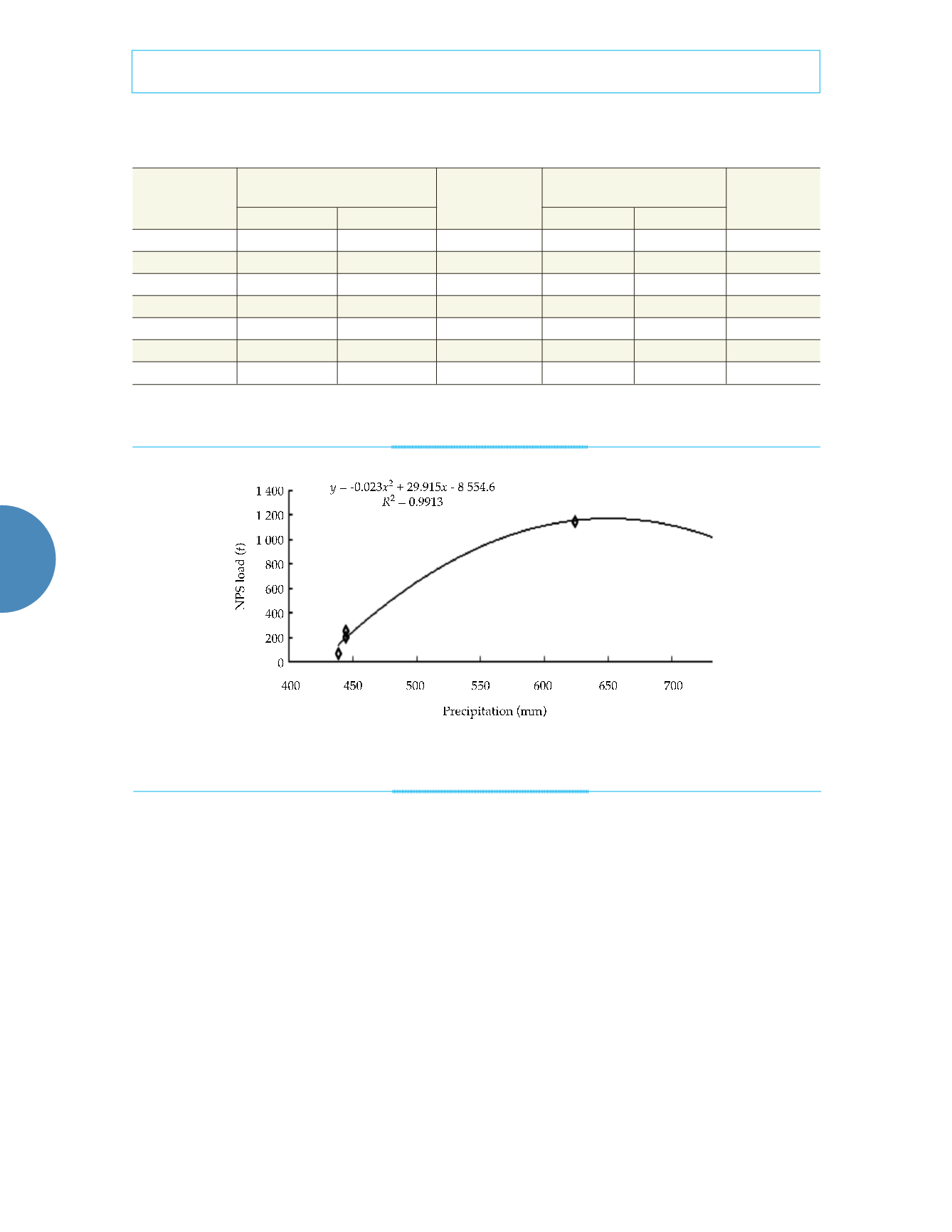
124
Tecnología y Ciencias del Agua
, vol. VIII, núm. 2, marzo-abril de 2017, pp. 117-126
Wang
et al
.,
Simulation for non-point source pollution based on QUAL2E in the Jinghe River, Shaanxi Province, China
•
ISSN 2007-2422
Figure 3. Fitted curve chart of annual precipitation and NPS loads of NO
3
—
N from 2002 to 2007.
Table 1. NPS loads of NO
3
−
-N and NH
4
+
-N from 2002 to 2007.
Year
Source-sink terms of NO
3
-
-N (t) Non-point load
(t)
Source-sink terms of NH
4
+
-N
(t)
Non-point
load (t)
Wet season Dry season
Wet season Dry season
2002
558.433
303.387
255.047
75.642
69.739
6.390
2003
1 012.816
175.820
836.996
152.163
80.829
71.333
2004
–
–
–
37.489
18.973
18.555
2005
506.638
297.984
208.653
56.418
51.117
5.302
2006
286.242
209.878
76.364
37.466
29.140
8.327
2007
1 297.502
147.330
1 150.958
26.037
6.231
19.806
Annual average
732.301
226.880
505.604
64.203
42.672
21.619
Note: There is no monitoring value of NO
3
−
-N in 2004.
than in the other normal years, due to lower
monthly precipitation from July to October in
2006, as compared to those of other normal
years. In 2006, the maximum monthly precipita-
tion occurred in June.
There is a wide variation of the source-sink
terms of NH
4
+
-N in dry and wet seasons, in-
dicating the instability of point and non-point
source discharges, due to different sources of
NH
4
+
-N in dry and wet seasons. PCA analysis
shows that NH
4
+
-N, COD
Mn
, and BOD
5
were
loaded on factor VF1 in dry seasons, which
indicates that they were from domestic sewage
and organic waste water discharged by juice
factories. NH
4
+
-N, volatile phenol and salinity
were loaded on factor VF2 in wet seasons, show-
ing that the main sources were industrial waste
water discharged by papermaking enterprises
in the upper reaches of the Jinghe River and
NH
4
+
-N adsorbed to eroded non-point source
soil particles that were transported in runoff.
Because the waste water discharges were dif-
ferent in these years, the source-sink terms of
NH
4
+
-N were different in dry and wet seasons.
The non-point source load of NH
4
+
-N was
71.3328 tons in 2003, which was higher than
those observed in other years. Since 2003 was
an unusually wet year, runoff transported large
amounts of NH
4
+
-N associated with eroded soil
particles to the river channel, whereas in other


